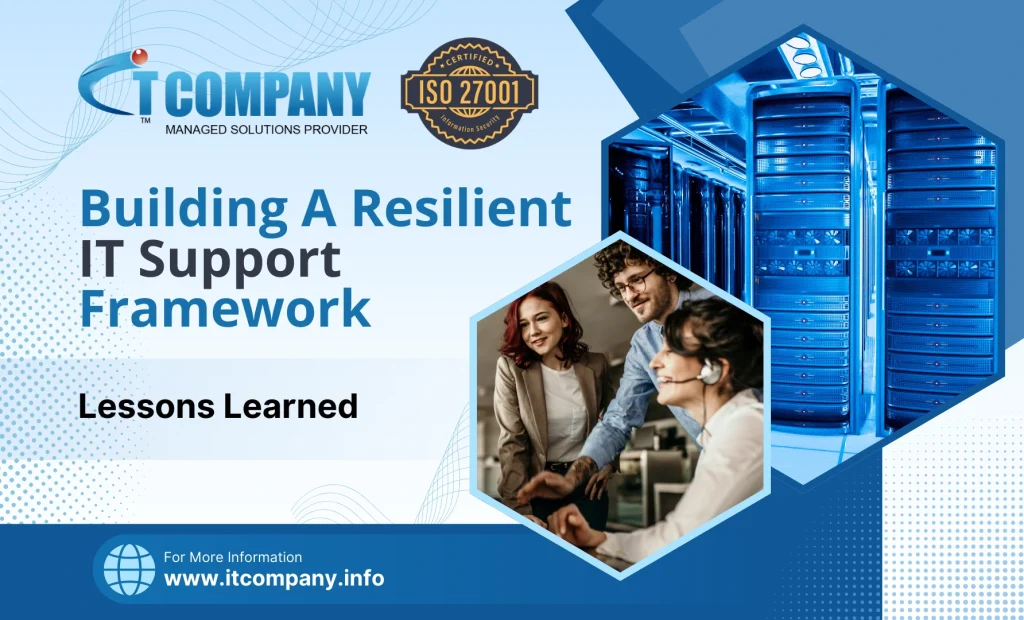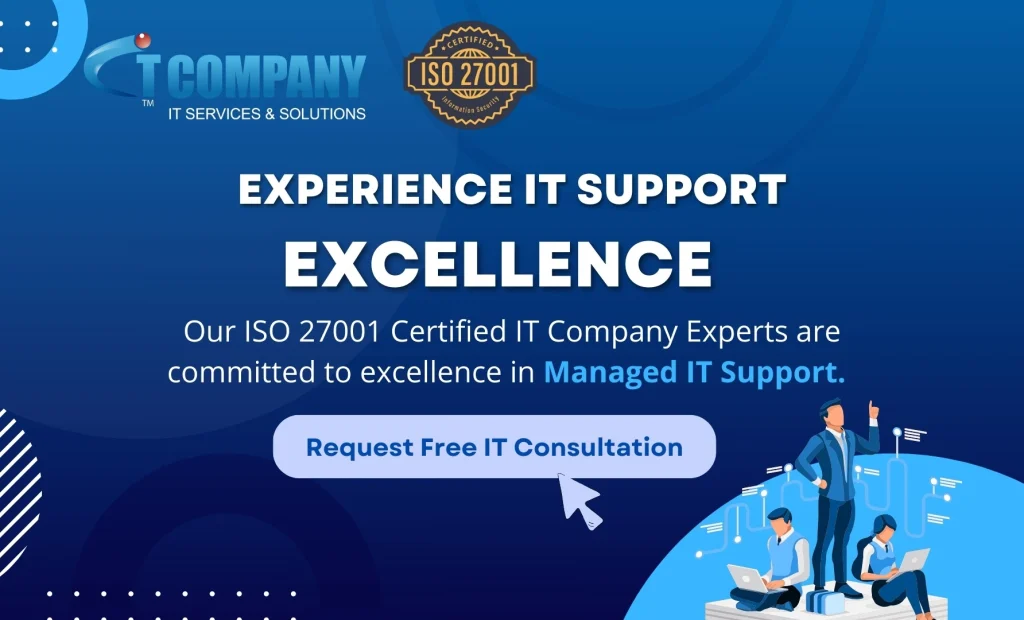
Resilient IT management and support framework is getting even more important because of continuous evolvement of infrastructure, productivity enhancement and provision of superior customer experiences. It is more important because of cybersecurity breaches and system failures.
In this blog, we’ll explore key lessons learned from successful implementations, strategies for resilience and common questions related to IT management and support.
Table of Contents
ToggleUnderstanding Resilience in IT Management
Resilient IT management refers to the ability to anticipate , prepare for, respond to, and recover from disruptive events. Robust framework especially of this type ensures optimized operations, minimizes downtime, and enables organizations to adapt to changing conditions.
Lesson 1: Emphasize Proactive Monitoring
Important part of IT support strategy is proactive monitoring. Organizations that adopt real-time monitoring systems can identify potential issues before they escalates. Tools they use provide real and advance insights about system performance, network traffic and application health. Robust team quickly address anomalies.
Key Strategies:
- Implement network monitoring tools.
- Regularly review system logs and alerts.
- Establish a dedicated team for incident response.
Lesson 2: Foster a Culture of Collaboration
Coordination between IT and other department is crucial. Team work in silos may impede the flow of information freely, leading to miscommunication and delayed responses in the time of crisis.
Fostering collaboration means skill diversity, deep insight knowledge to solve problems and address issues effectively.
Key Strategies:
- Hold regular cross-departmental meetings.
- Utilize collaborative tools like Slack or Microsoft Teams for seamless communication.
- Encourage joint training sessions to build mutual understanding.
Lesson 3: Invest in Training and Development
Continuous training for IT staff is essential for keeping up with technological advancements and emerging threats. Organizations that invest in training their teams are better equipped to handle incidents and adopt new technologies that enhance resilience.
Key Strategies:
- Provide access to online courses and certifications.
- Conduct regular workshops and simulations to prepare for crises.
- Encourage employees to attend industry conferences and networking events.
Lesson 4: Develop Comprehensive Incident Response Plans
Incident response plan is a pivotal point for any organization. The plans should outline procedures for different scenarios. Regular update, and plans practices ensures team collaboration and their key roles and responsibilities during incident.
Key Strategies:
- Identify critical business functions and prioritize them in the plan.
- Conduct regular drills to test the effectiveness of the response plan.
- Keep documentation accessible and updated for quick reference.
Lesson 5: Leverage Cloud Solutions for Flexibility
Cloud computing is a flexible and scalable solution to IT management and transformation. Utilizing it not only enhances resilience but also facilitates disaster recovery, data backup and resource allocation. Organizations can respond to changing demands without incurring significant expenses.
Key Strategies:
- Use cloud-based backup solutions for data protection.
- Implement Infrastructure as a Service (IaaS) for scalable resources.
- Regularly evaluate cloud service providers for reliability and support.
Conclusion

Building a resilient IT management and support framework is an ongoing journey that requires commitment, collaboration, and continuous improvement. By learning from past experiences and implementing the lessons outlined above, organizations can enhance their ability to respond to disruptions and thrive in an ever-evolving digital landscape. The path to resilience may be challenging, but the rewards—sustained operations, enhanced productivity, and improved customer satisfaction—are well worth the effort.
Resilient IT management and support framework is an ongoing journey. It requires commitment, collaboration, and continuous improvement.




